Blackbirds and starlings can quickly overwhelm backyard bird feeders, leaving little for your favorite songbirds. These invasive species, including iridescent starlings with speckled plumage and native grackles with their purple-blue sheen, flock in large numbers seeking easy meals. Learning to distinguish them—starlings have dark winter beaks turning yellow in summer, while red-winged blackbirds and cowbirds join the mix—helps in targeted deterrence. By implementing proven strategies, you can protect suet, seeds, and other foods, ensuring smaller birds like woodpeckers, chickadees, and cardinals get their share. For more on bird seed nutrition, check our related guide.
Starlings prefer insects and berries but raid feeders for softer options like suet and peanuts when natural food is scarce. Their beaks struggle with hard shells, making them picky yet persistent. Native blackbirds, better seed-crackers, devour sunflower and millet blends readily. Combining exclusion tactics, challenging feeders, and unappealing foods minimizes their impact without harming desired species. These methods, drawn from years of backyard birding experience and store-tested products, emphasize efficiency and bird welfare.
Option #1: Physically Exclude Them with Caged Feeders
The most reliable way to deter blackbirds and starlings is physical barriers that block larger birds while allowing smaller ones access. Cage-style guards surround feeders with openings too narrow for these bulky invaders, yet finches, nuthatches, and wrens slip through effortlessly.
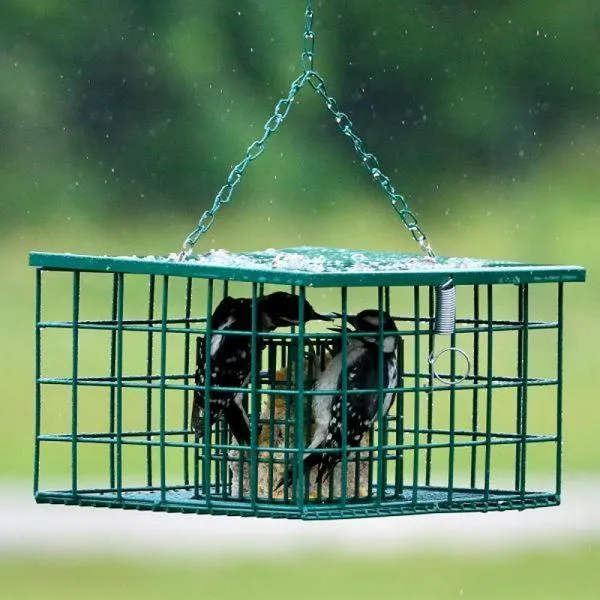 Caged suet feeder designed to exclude starlings and blackbirds while allowing woodpeckers access
Caged suet feeder designed to exclude starlings and blackbirds while allowing woodpeckers access
Suet Feeder with Built-In Guard: This holds two suet cakes, attracting woodpeckers, titmice, bluebirds, Carolina wrens, and nuthatches. Even larger woodpeckers reach in with their long necks and tongues. Starlings, grackles, and squirrels are completely shut out, saving food costs quickly.
On-Guard Protectors for Various Feeders: These add-on cages fit peanut, cylinder, and tube feeders. Small birds enter freely; woodpeckers adapt creatively. Blackbirds can’t squeeze through.
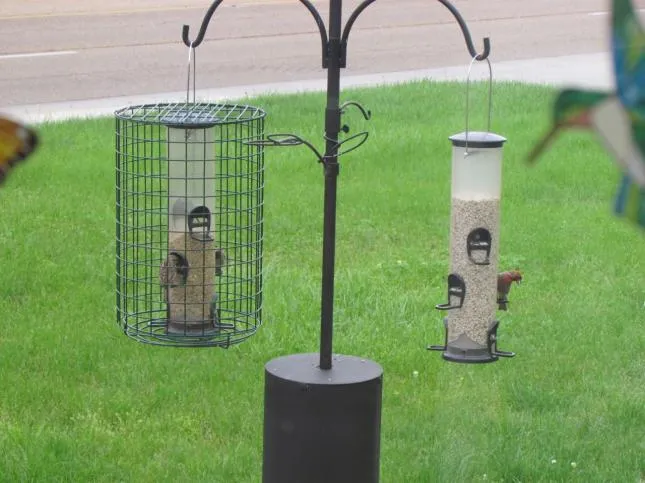 On-Guard cage protector for tube feeders paired with safflower seed to deter blackbirds
On-Guard cage protector for tube feeders paired with safflower seed to deter blackbirds
Pair an On-Guard tube feeder with safflower seed—blackbirds dislike its taste and tough shell, while cardinals adore it. This setup outside stores has proven effective, stopping squirrels too. Woodpeckers still feast by stretching in. For local advice, contact stores like Wild Birds Unlimited at 217-789-6468 for curbside or shipping options.
These cages pay off fast, often within weeks, as they eliminate waste from unwanted visitors.
Option #2: Slow Them Down with Challenging Feeders
If cages alter your yard’s aesthetics, opt for feeders that demand acrobatics starlings and blackbirds struggle with. These aren’t foolproof alone but shine in combination strategies.
Upside-Down Suet Feeder: Woodpeckers cling effortlessly underneath, but starlings falter despite their adaptability. It won’t stop determined flocks entirely, yet prevents rapid depletion of suet cakes. Ideal for suet lovers avoiding cages.
 Clingers Only feeder with no perches, ideal for small clinging birds like chickadees
Clingers Only feeder with no perches, ideal for small clinging birds like chickadees
Clingers Only Feeder: Lacking perches, it favors goldfinches, chickadees, titmice, and nuthatches that cling to mesh. Blackbirds tire quickly without landing spots, reducing their dominance. Integrate into a multi-feeder system for best results.
These designs leverage bird physiology—smaller species excel at clinging and upside-down feeding, frustrating larger pests.
Option #3: Offer Less Appealing Foods
Strategic seed choices exploit blackbirds’ and starlings’ preferences, drawing desired birds instead.
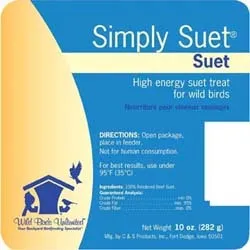 Pure Simply Suet block, unappealing to most starlings but loved by woodpeckers
Pure Simply Suet block, unappealing to most starlings but loved by woodpeckers
Simply Suet: Rendered beef fat without nuts or fruits baffles starlings, who rarely touch it unless desperate. Woodpeckers thrive on it, and squirrels ignore it. Pair with nutty SuperSuet in cages for variety—personal experience shows woodpeckers visit both happily.
In-Shell Peanuts: Starlings lack the bill strength for whole shells, attracting jays, woodpeckers, and titmice instead. Grackles may crack some, but it’s starling-specific. Avoid if shells are thin.
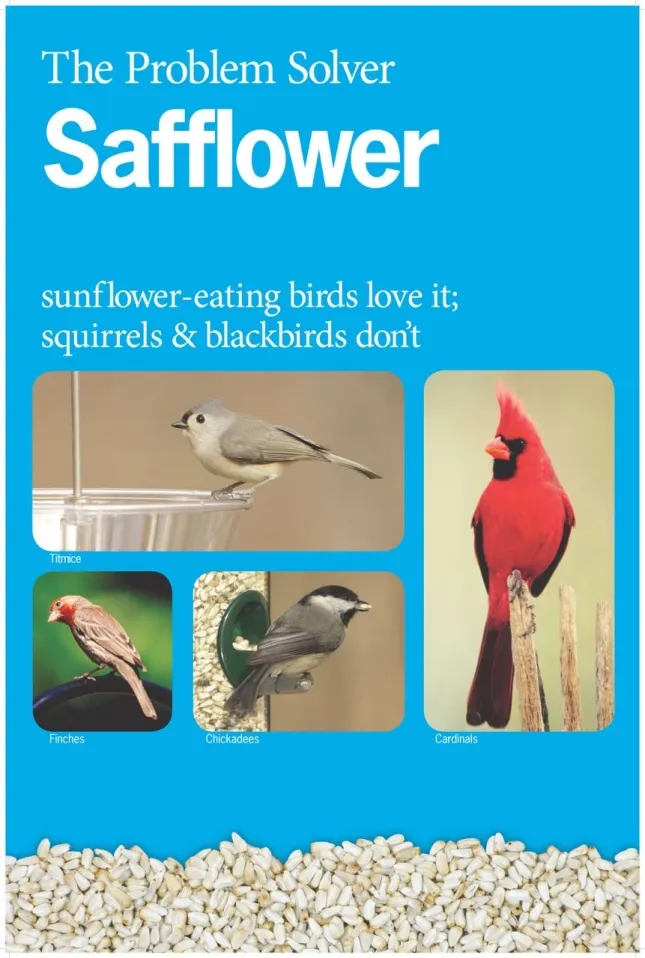 Safflower seeds and cylinders, disliked by blackbirds due to hard shells and bitter taste
Safflower seeds and cylinders, disliked by blackbirds due to hard shells and bitter taste
Safflower Seeds and Cylinders: Tough hulls defy starlings; grackles dislike the flavor. Cardinals, house finches, and doves love it (loose for doves). Use pure—no mixes—or it loses punch. Combine with caged blends for cardinals and small birds.
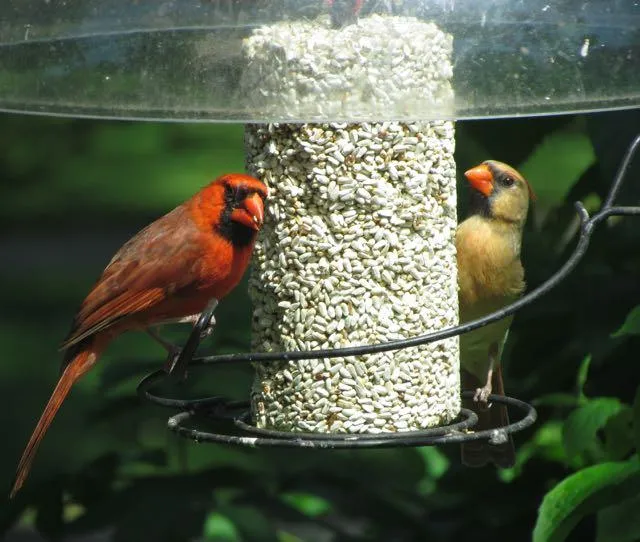 Another view of safflower cylinder for bird feeders
Another view of safflower cylinder for bird feeders
Sunflower Chips and Hot Sunflower Cylinders:
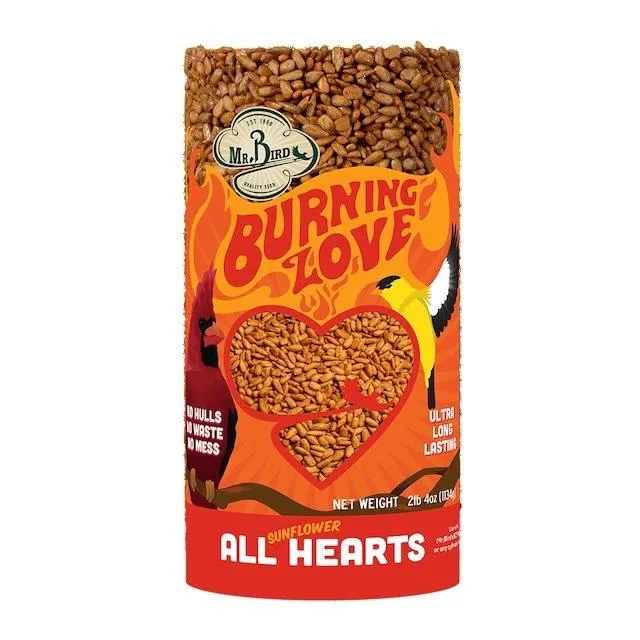 Hot sunflower chip cylinder, squirrel-resistant and less favored by starlings
Hot sunflower chip cylinder, squirrel-resistant and less favored by starlings
Sunflower chips offer no-mess feeding; starlings eat sparingly. Hot versions resist squirrels too, suiting wrens or woodpeckers avoiding safflower. Use in any feeder.
 Various blackbirds and starlings at feeders, including grackles and red-winged blackbirds
Various blackbirds and starlings at feeders, including grackles and red-winged blackbirds
Bird Tip: Skip bread or pizza scraps—they magnetize starlings while songbirds ignore them.
Final Thoughts
Deterring blackbirds and starlings combines exclusion cages, tricky feeders, and smart foods like safflower, Simply Suet, and peanuts. Start with cages for suet and tubes, add safflower for cardinals, and monitor results—adjust as flocks adapt. These expert-backed tips, refined through local birding insights, keep your backyard welcoming for woodpeckers, finches, and friends.
Visit Wild Birds Unlimited for personalized plans or online at MyWBU. Share your success stories—what works in your yard?
References
- Wild Birds Unlimited Springfield, IL observations and product testing.
- General avian feeding guidelines from backyard birding experts.
